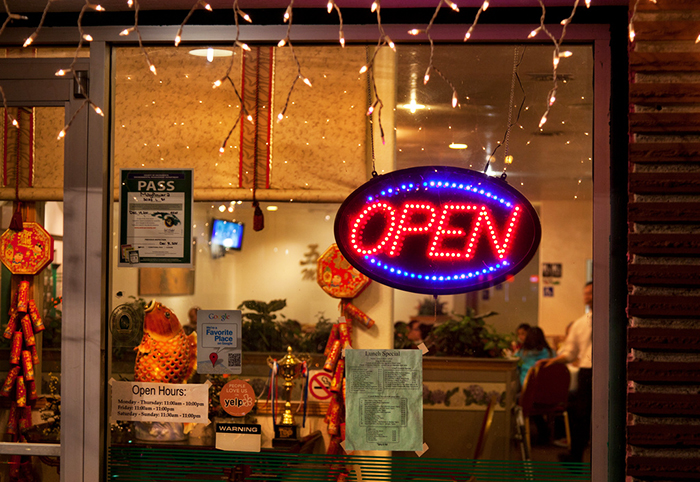Growing up in a Jewish household in suburban New Jersey, I always found the Christmas holiday season a bit awkward. While many houses on our street were decorated with brightly colored lights and a tree, ours was not. While my schoolmates harked the herald angels, joyful and triumphant, I dared not utter certain phrases in our classroom carol-singing for fear that I might be unfaithful to my faith. Rather than sing the words, “Christ the Savior is born,” I simply hummed the melody. And while nearly all the Christian families in our neighborhood were enjoying a traditional Christmas Day dinner, my family was eating Chinese food.
I always figured the reason Jewish Americans (especially those in the New York metropolitan area) went to Chinese restaurants on Christmas was that almost all other restaurants were closed. That’s still part of the explanation, but there seems to be much more to the phenomenon according to several recent studies, including “Why American Jews Eat Chinese Food on Christmas,” “Jewish Activities on Christmas: An Online Case Study,” “Identity Takeout: How American Jews Made Chinese Food Their Ethnic Cuisine,” and A Kosher Christmas: ’Tis the Season to Be Jewish.
From a dietary perspective, Chinese food (if you were to ignore the pork and shellfish) comes close to being Kosher in that it rarely contains dairy products. Jewish dietary laws require that dairy products never be eaten together with meat. From a spatial perspective, the predominantly Jewish neighborhood of Manhattan’s Lower East Side, which was (according to the Library of Congress) “the greatest concentration of Jewish life in nearly two thousand years”) was directly adjacent to Manhattan’s Chinatown, which contained the largest enclave of Chinese Americans in the nation.

A cartoon by David Mamet. Reprinted with permission from Tablet magazine
This geographic proximity facilitated the exchange of cuisines between the two ethnic communities as early as the turn of the twentieth century. Just as “You don’t have to be Jewish to love Levy’s Real Jewish Rye” (in the words of an extremely successful advertising campaign in the 1960s and 1970s), you don’t have to be Chinese to love Chinese food, especially at Christmas.
From the perspective of immigration studies, both Jewish Americans and Chinese Americans saw themselves as immigrant outsiders in a nation that for much of its history regarded itself as predominantly White Anglo-Saxon Protestant. Especially on Christmas Day, which is the one and only U.S. federal holiday with religious origins, non-Christians may look to each other for solidarity and support—though admittedly there are no comparable reports of Chinese Americans flocking to Jewish delicatessens.
From the perspective of ethnic foodways, Chinese food seems especially appropriate for bringing people together. Dishes are typically not eaten individually, but rather are placed on a “Lazy Susan” at the center of the table and shared. Christmas celebrants might have their traditional plates of turkey, ham, and goose, but Chinese food for Jews represents a meal that is both exotic and familiar.
Finally, there is the simple fact that Jews (like many other groups in the United States) enjoy eating Chinese food. According to Chop Suey, USA: The Story of Chinese Food in America, Chinese food is now the most popular ethnic food in the United States. As a typically self-deprecating Jewish joke goes: the Jewish people are five thousand years old, and the Chinese people are three thousand years old. So what did the Jews eat for those first two thousand years?
James Deutsch was co-curator for the 2014 Smithsonian Folklife Festival program China: Tradition and the Art of Living, which afforded him the opportunity to sample many types of Chinese foods in China—all of which bore very little resemblance to the “Chinese food” he remembers eating in New Jersey.


